Trump, the GOP, and Stochastic Terrorism
A conversation in two parts.
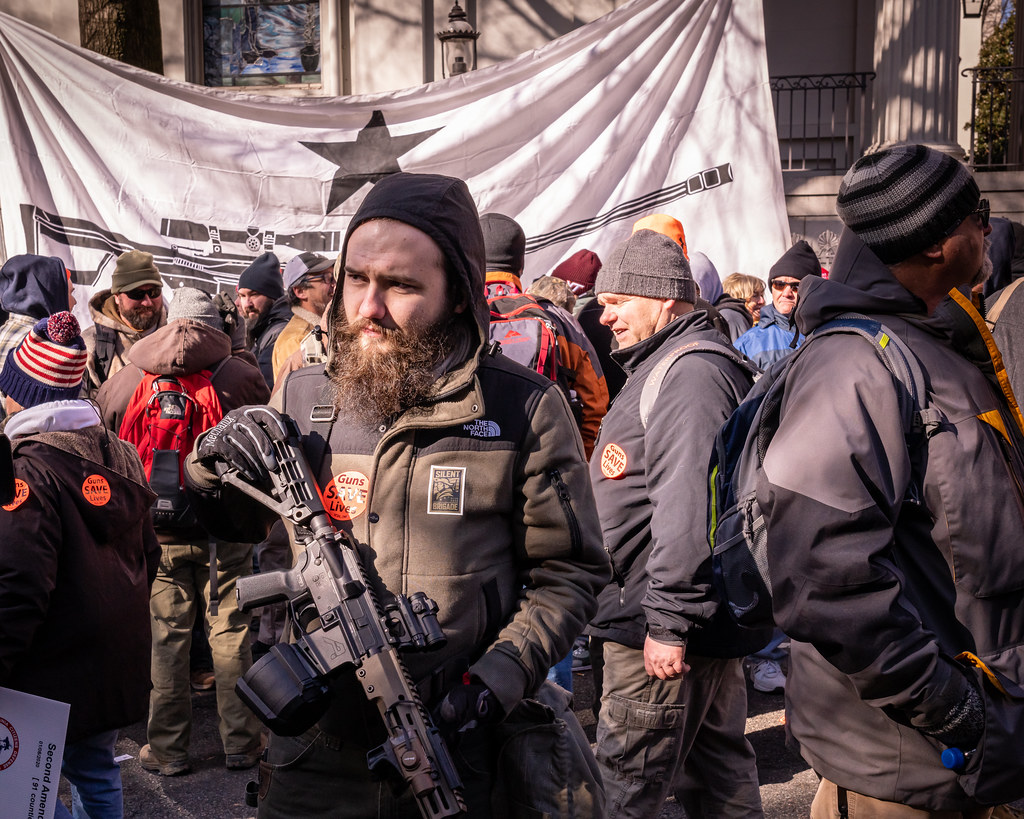
Reporters Lisa Lerer and Astead W. Herndon have an important front-page feature in today’s NYT under the headline “Menace Enters the Republican Mainstream.”
At a conservative rally in western Idaho last month, a young man stepped up to a microphone to ask when he could start killing Democrats.
“When do we get to use the guns?” he said as the audience applauded. “How many elections are they going to steal before we kill these people?” The local state representative, a Republican, later called it a “fair” question.
In Ohio, the leading candidate in the Republican primary for Senate blasted out a video urging Republicans to resist the “tyranny” of a federal government that pushed them to wear masks and take F.D.A.-authorized vaccines.
“When the Gestapo show up at your front door,” the candidate, Josh Mandel, a grandson of Holocaust survivors, said in the video in September, “you know what to do.”
And in Congress, violent threats against lawmakers are on track to double this year. Republicans who break party ranks and defy former President Donald J. Trump have come to expect insults, invective and death threats — often stoked by their own colleagues and conservative activists, who have denounced them as traitors.
From congressional offices to community meeting rooms, threats of violence are becoming commonplace among a significant segment of the Republican Party. Ten months after rioters attacked the United States Capitol on Jan. 6, and after four years of a president who often spoke in violent terms about his adversaries, right-wing Republicans are talking more openly and frequently about the use of force as justifiable in opposition to those who dislodged him from power.
In Washington, where decorum and civility are still given lip service, violent or threatening language still remains uncommon, if not unheard-of, among lawmakers who spend a great deal of time in the same building. But among the most fervent conservatives, who play an outsize role in primary contests and provide the party with its activist energy, the belief that the country is at a crossroads that could require armed confrontation is no longer limited to the fringe.
As Lerer and Herndon acknowledge, violent imagery and even violent rhetoric are hardly new in American politics. Even in recent times, people openly displayed assault rifles and strapped-on pistols at Tea Party rallies more than a decade ago. Not-so-subtle threats of violence have long been part of fringe websites, t-shirts, posters, and the like. But it was incredibly rare for a politician, much less an office-holder, to actively participate.
Political violence has been part of the American story since the founding of the country, often entwined with racial politics and erupting in periods of great change: More than 70 brawls, duels and other violent incidents embroiled members of Congress from 1830 to 1860 alone. And elements of the left have contributed to the confrontational tenor of the country’s current politics, though Democratic leaders routinely condemn violence and violent imagery.
But historians and those who study democracy say what has changed has been the embrace of violent speech by a sizable portion of one party, including some of its loudest voices inside government and most influential voices outside.
In effect, they warn, the Republican Party is mainstreaming menace as a political tool.
During the rise of the Tea Party, we certainly saw some candidates for Congress who used fringe rhetoric. But they either lost in the primaries to more mainstream candidates or lost in the general election.
Omar Wasow, a political scientist at Pomona College who studies protests and race, drew a contrast between the current climate and earlier periods of turbulence and strife, like the 1960s or the run-up to the Civil War.
“What’s different about almost all those other events is that now, there’s a partisan divide around the legitimacy of our political system,” he said. “The elite endorsement of political violence from factions of the Republican Party is distinct for me from what we saw in the 1960s. Then, you didn’t have — from a president on down — politicians calling citizens to engage in violent resistance.”
The obvious turning point was the emergence of Donald Trump during the 2016 primaries.
From his earliest campaigning to the final moments of his presidency, Mr. Trump’s political image has incorporated the possibility of violence. He encouraged attendees at his rallies to “knock the hell” out of protesters, praised a lawmaker who body-slammed a reporter, and in a recent interview defended rioters who clamored to “hang Mike Pence.”
But the fact that Trump not only won but did so rather easily would indicate that the time was already ripe for his brand. Plenty of hard-right candidates with populist, angry appeals had presented themselves before but they’d been defeated in the primaries by more “normal” candidates. Even after the Tea Party became the dominant wing of the party, the primary electorate chose Mitt Romney from a field of more extreme candidates.
Yet even with the former president largely out of the public eye and after a deadly attack on the Capitol where rioters tried to overturn the presidential election, the Republican acceptance of violence has only spread. Polling indicates that 30 percent of Republicans, and 40 percent of people who “most trust” far-right news sources, believe that “true patriots” may have to resort to violence to “save” the country — a statement that gets far less support among Democrats and independents.
Such views, routinely expressed in warlike or revolutionary terms, are often intertwined with white racial resentments and evangelical Christian religious fervor — two potent sources of fuel for the G.O.P. during the Trump era — as the most animated Republican voters increasingly see themselves as participants in a struggle, if not a kind of holy war, to preserve their idea of American culture and their place in society.
Again, this isn’t a new development. Folks like G. Gordon Liddy were saying this kind of stuff during the Nixon administration and Pat Buchanan campaigned on it during the 1992 Republican primaries. But the leaders who were the face of the party were much more moderate in their messaging and vision. More importantly, they operated under the assumption that working with Democrats was part and parcel of governing. Nixon, Reagan, and both Bushes routinely brokered compromises with the opposition party. And, when out of power, the likes of Bob Dole and even Newt Gingrich figured out how to get deals done with Democratic Presidents and colleagues.
Notably few Republican leaders have spoken out against violent language or behavior since Jan. 6, suggesting with their silent acquiescence that doing so would put them at odds with a significant share of their party’s voters. When the Idaho man asked about “killing” political opponents at an event hosted by the conservative activist Charlie Kirk, Mr. Kirk said he must “denounce” the question but went on to discuss at what point political violence could be justified.
In that vacuum, the coarsening of Republican messaging has continued: Representative Paul Gosar, Republican of Arizona, this week tweeted an anime video altered to show him killing Representative Alexandria Ocasio-Cortez and swinging two swords at Mr. Biden.
There was quite a bit of hostility from Democrats to the younger Bush, both because they believed the 2000 election was illegitimate and especially after the Iraq invasion. But I don’t remember anything as coarse as Let’s Go Brandon being mainstreamed, much less violent rhetoric from Members of Congress.
Certainly, things got more heated during the Trump years. There were mass protests ahead of is inauguration and plenty of vitriol directed at him over various controversial policy decisions. And, even at the elite level, there was harsher-than-customary rhetoric. But even noted firebrand Maxine Waters didn’t go so far as to suggest Trump should be killed. Indeed, she drew outrage (and rightly so) from the mere suggestion that people should harass his senior officials when they showed up in public places.
Lee Drutman, a senior fellow at the left-leaning group New America who has studied political violence, said there was a connection between such actions and the growing view among Americans that politics is a struggle between enemies.
“When you start dehumanizing political opponents, or really anybody, it becomes a lot easier to inflict violence on them,” Dr. Drutman said.
“I have a hard time seeing how we have a peaceful 2024 election after everything that’s happened now,” he added. “I don’t see the rhetoric turning down, I don’t see the conflicts going away. I really do think it’s hard to see how it gets better before it gets worse.”
There’s much more to the piece, but you get the point.
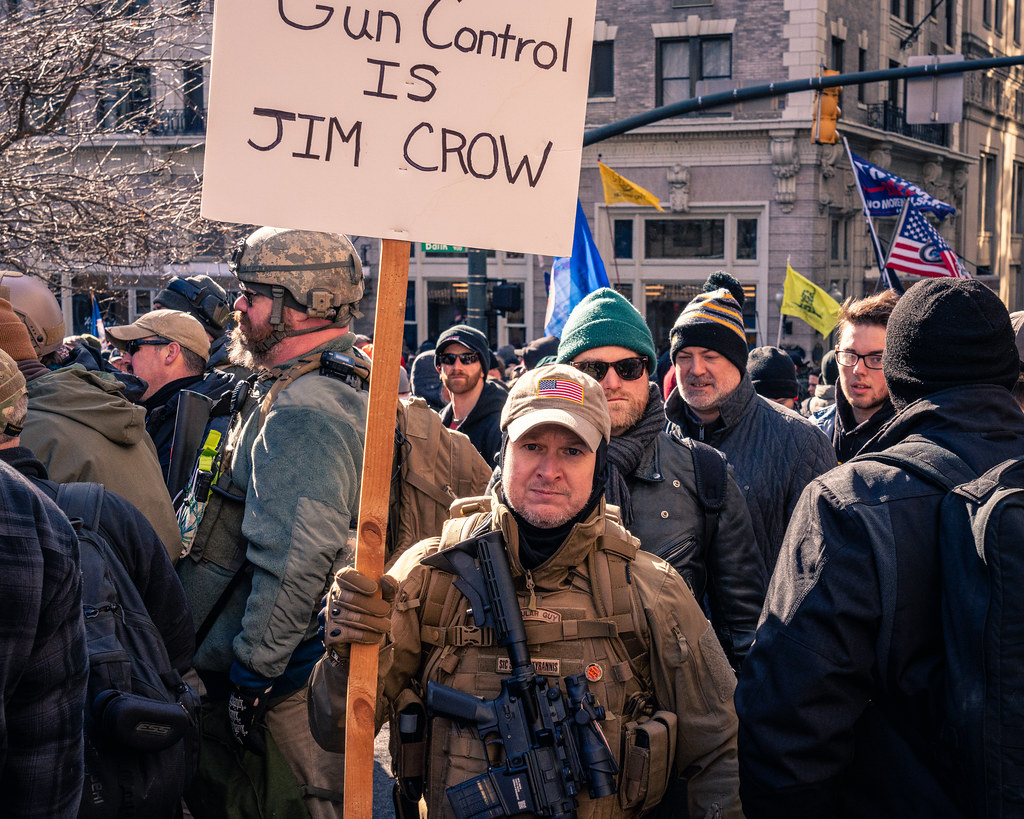
There has been hateful rhetoric, including some with violent undertones, on the fringes of the conservative moment for quite some time. The fringe somewhere became the mainstream and Trump was the face, if not the cause, of that. And he has either allowed others in the party to take the mask off or, at very least, turned them into utter cowards afraid to stand up for the basic norms they’ve long championed.
I have been pushing back for some time against the notion that Trump and other Republican leaders are engaged in “stochastic terrorism.” As best I can tell, it was first leveled in late 2018 by Quartz White House correspondent Heather Timmons, went mainstream when former Obama Homeland Security official Juliette Kayyem leveled it vaguely in an August 2019 WaPo op-ed, went viral when Kayyem tweeted a far more incendiary thread last December, and pushed by Mother Jones national affairs editor Mark Follman and Slate legal analyst Dahlia Lithwick, among others.
The term was apparently coined in 2011, by a Daily Kos diarist under the handle G2geek in the wake of the Gabby Giffords shooting:
Stochastic terrorism is the use of mass communications to stir up random lone wolves to carry out violent or terrorist acts that are statistically predictable but individually unpredictable.
This is what occurs when Bin Laden releases a video that stirs random extremists halfway around the globe to commit a bombing or shooting.
This is also the term for what Beck, O’Reilly, Hannity, and others do. And this is what led directly and predictably to a number of cases of ideologically-motivated murder similar to the Tucson shootings.
After pushback from commenters, G2geek added,
The person who actually plants the bomb or assassinates the public official is not the stochastic terrorist, they are the “missile” set in motion by the stochastic terrorist. The stochastic terrorist is the person who uses mass media as their means of setting those “missiles” in motion.
Here’s the mechanism spelled out concisely:
The stochastic terrorist is the person who uses mass media to broadcast memes that incite unstable people to commit violent acts.
One or more unstable people responds to the incitement by becoming a lone wolf and committing a violent act. While their action may have been statistically predictable (e.g. “given the provocation, someone will probably do such-and-such”), the specific person and the specific act are not predictable (yet).
The stochastic terrorist then has plausible deniability: “Oh, it was just a lone nut, nobody could have predicted he would do that, and I’m not responsible for what people in my audience do.”
The lone wolf who was the “missile” gets captured and sentenced to life in prison, while the stochastic terrorist keeps his prime time slot and goes on to incite more lone wolves.
Further, the stochastic terrorist may be acting either negligently or deliberately, or may be in complete denial of their impact, just like a drunk driver who runs over a pedestrian without even realizing it.
Finally, there is no conspiracy here: merely the twisted acts of individuals who are promoting extremism, who get access to national media in which to do it, and the rest follows naturally just as an increase in violent storms follows from an increase in average global temperature.
Here’s the thing: I absolutely believe that irresponsible, hateful rhetoric can trigger violence. My problem is that what bin Laden did is categorically different from what Hannity, Beck, O’Reilly and their ilk do. Unlike G2geek, I think intent matters. It simply makes no sense to apply the label “terrorism” or “terrorist” to those who aren’t seeking to incite violence since it’s definitionally a part of what makes something terrorism.
Kayyem’s argument is even more insidious. In the above-linked op-ed, she explains,
Public speech that may incite violence, even without that specific intent, has been given a name: stochastic terrorism, for a pattern that can’t be predicted precisely but can be analyzed statistically. It is the demonization of groups through mass media and other propaganda that can result in a violent act because listeners interpret it as promoting targeted violence — terrorism. And the language is vague enough that it leaves room for plausible deniability and outraged, how-could-you-say-that attacks on critics of the rhetoric.
Trump fails to shame white supremacy. That is all anyone needs to know. And a responsible president — one who was appalled that his language might have been misconstrued and was contributing to the greatest terror threat in America today — would surely change his rhetoric. The failure to do so doesn’t mean Trump welcomes the violence; it does mean that he isn’t shaming its adherents.
This is simply outrageous guilt by association. And it goes beyond G2geek’s definition, including even failure to shame unacceptable behavior as terrorism. In the Twitter thread, she goes further still, asserting—weeks before the January 6 attack on the Capitol—that Trump’s “goal was to promote violence for political gain.”
Am I prepared to be convinced that he deliberately orchestrated the violence that day? I am. After all, he seemed positively gleeful that his supporters stormed the Capitol and took hours before coming out to ask them to stop. But I’ve yet to see real proof of that. But the evidence provided thus far doesn’t quite rise to the level of coup mastermind. I’m not asking for evidence beyond a reasonable doubt, as befitting a criminal trial. But we should demand at least a preponderance of the evidence standard before labeling someone a “terrorist.”
But here’s the thing: I’m objecting to the label “terrorism” much more than I am to the explanation. My disagreement on the substance with Timmons, Kayyem, and Follman about what’s happening is at the margins.
It simply makes no sense to term hateful or polluting rhetoric “terrorism” absent proof of intent to cause violence to achieve political ends. That, after all, is what terrorism means. It does us no good to add a modifier that negates the noun. But there’s no doubt that Trump and many other Republican leaders are intentionally adding to the country’s polarization and creating an atmosphere that makes violence seem justified.
In many posts leading up to the 6 January attacks, I expressed concern that Trump’s attempts to delegitimate the election could lead to violence. His rhetoric was absolutely dangerous. And, in the aftermath of the attacks, it seemed rather obvious that, while he almost certainly didn’t meet the strict requirements to be charged with criminal incitement—the barriers are correctly high, given how sacrosanct the freedom of expression is in this country—he was rightly impeached for his role in inciting the violence. Impeachment is a political process, not a criminal one, and he absolutely acted with gross malfeasance. And, by failing to support his ouster, all but a handful of Republican Representatives and Senators made future violence more likely.

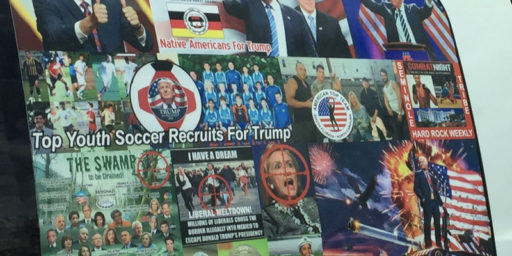

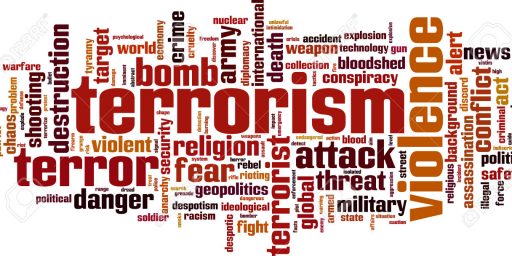
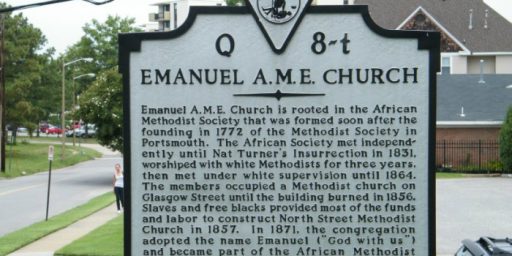

I too think intent matters. But I think Beck, Hannity, etc. fully intend for political violence to occur, they just are smart enough to maintain enough plausible deniability to avoid being held legally responsible for it when their efforts succeed.
Intent is unknown and unknowable. The law recognizes reckless indifference as culpable. I don’t know why we wouldn’t.
@barbintheboonies:
What has two thumbs and doesn’t care?
@barbintheboonies: What has any of that have to do with Stormy?
@gVOR08:
That’s “Professor Dragon” to you, plebe! I didn’t spend four years on a doctorate in hoarding to be called “Stormy”! ;P
@Stormy Dragon:
There does seem to be a Professor Dragon, at least a fictional one.
@gVOR08:
Yes BUT. We recognize reckless indifference but so far as I know (IANAL) only with respect to actions committed by the indifferent individual AND the punishment is typically much less than those where malicious intent can be proved.
Ya’ll, it’s best to just ignore the emotionally ill person who is trolling us. Yesterday she shared in the comments on the photo post the reason she is here:
This is a person who is apparently compelled to hate-read and hate-post nonsense until she gets suspended or banned.
That’s a lot of internal anger to be living with. She deserves pity rather than scorn. I hope someday you address whatever underlying trauma or other issues that have brought you to this point Barb.
@James Joyner: Generally true, though there have been efforts in some States to undo that effort through truly reprehensible “felony murder” laws.
https://en.m.wikipedia.org/wiki/Felony_murder_rule
James, I think you’re trying to bisect the hairs too finely. Is responsibility for the 9/11 attacks purely a function of how close you were to the planning and execution? In that view, Khalid Sheik Mohammed and Mohammed Atta would have been more responsible than Osama bin Laden, which is not a moral or operational position I would certainly take.
The Josh Mandels and Donald Trumps are just playing the modern version of the “Will no one rid me of this meddlesome priest?” game. Henry II’s not-so-idle musings eventually led to the famous acknowledgement of his responsibility, the humiliating walk to Canossa. If 11th century people can figure out that these incitements of violence make you responsible for the violence, then those of us living a thousand years later can absorb that idea, too.
If the point of these public musings on the part of Trump, Mandel, and their ilk is to use the fear of future violence to achieve particular political outcomes (submission, counter-productive actions done in the heat of the moment, etc.), then yes, this is a form of terror. According to that standard, our national security apparatus brands people who record militant recruiting videos in the name of a particular terrorist organization as part of that organization’s terrorist campaigns. Sometimes, the recruits formally join the organization. In other cases, the recruits carry out “lone wolf” attacks, inspired and guided by someone who never met, or even knew the name of, the perpetrator of violence. If we look at Hamas or ISIS through that lens, then there is no argument for not using the same standard here, except for a naive belief that it can’t happen here.
Note also the parallels with the violent anti- abortion rhetoric which lead to physical threats, violence, intimidation and murder.
A couple of weeks ago I got on my Congressman, Chip Roy, for calling something “evil”. Why? Because calling something “evil” is using the language of violence. You don’t reference religion in your piece but in religious circles, evil must be destroyed. There is no alternative. The far right is dominated by Christian violent imagery, by the need to stand up against evil, to defend against evil, by any means necessary. It is domestic terrorism in the making.
Perhaps domestic terrorism requires another name: organized crime is taken but I’m open to suggestions. The thing I want to know is how many people have died because of direct action by Trump and his cohorts- half a million? (Yes I’m including COVID-so sue me). We are getting close to Pol Pot territory.
@Raoul:
“The thing I want to know is how many people have died because of direct action by Trump and his cohorts- half a million? (Yes I’m including COVID-so sue me). We are getting close to Pol Pot territory.”
I think there is something to this. Just as the same side of the aisle which loudly proclaims themselves to be “pro-life” has been doing their best to frustrate efforts to control a virus which has already killed nearly 1 in 400 Americans, the same side of the aisle which proclaims themselves to be “the party of personal responsibility” refuses to take a stand against the leaders on their side who encourage violence. When refusing to condemn an attempt to violently overturn the result of a free and fair election and instead lying to support those who took part in it becomes a test for whether one is a member in good standing in the Republican Party, the way Republicans think of themselves has become nothing more than a sick joke.
A quibble James:
You say “It simply makes no sense to term hateful or polluting rhetoric “terrorism” absent proof of intent to cause violence to achieve political ends.” We have seen what their rhetoric does, the end results. So have they. They continue to engage in this “hateful rhetoric,” knowing full well the violence it will most likely end with, always cranking it up another notch regardless of the violence it results in. When their followers bring guns to political demonstrations, What are they saying? When they bring guns to political demonstrations and use them, what are they saying? When their followers hatch a plot to kidnap a sitting governor and are called “patriots” for it, what are they saying?
They say, “Insanity is doing the same thing time after time but expecting different results.” I would posit that watching people say the same inflammatory things over and over again but refusing to draw a direct connection between that language and the resultant violence is also insane.
Old guy here. In 1963, no one was surprised that JFK was killed in Dallas. We were shocked and dismayed, but not surprised. The whole thing was in the atmosphere of that place and time. Oswald’s immediate identity was a surprise, but he was killed before he could answer any questions. If you send out enough seeds, one will find receptive soil. ISIS is a minuscule portion of the Islamic world. The heated rhetoric of our times and availability of weapons are bound to find someone to take evil steps.
@Slugger:
“We’re heading into nut country today.”
— John F. Kennedy to Jacqueline Kennedy, Nov. 22, 1963
@Matt Bernius: I think they’re generally a bad idea but ‘felony murder’ at least requires active participation in the associated crime.
@Scott: Another thing about theocracy — even the one in the minds of Christian Nationalists/Dominionists — is that error has no rights.
And we know who decides, eh?
Just a reminder that, IIRC, barb was a commentor at Stormfront. When called out, she claimed not to have understood SF was white supremacist and it was just a big whoopsie. If that is the case, it speaks to her intelligence. If it’s not the case, it speaks to her honesty.
(I may be getting her confused with long ago commentor “Hoosiermom” but their comments are indistinguishable.)
Frankly, I’m a big fan of guilt by association. It is under utilized if you ask me.
Some discernment is required – one can’t choose one’s family, for example – but the organizations and people public figures choose to associate themselves do show us who these figures are and what they value. And I’m willing to accept that sometimes disassociation isn’t possible, but it’s not too much to ask for someone to disclaim an associate’s views when those views reflect on them. (In some cases, even family will disclaim family. Rep. Gosar’s siblings have renounced his rhetoric and we all know how Mary Trump feels about her uncle.)
Kayyem argues, “Trump fails to shame white supremacy. That is all anyone needs to know…” I’d go on to say, “Republican politicians and far too many GOP voters fail to shame Trump. That is all anyone needs to know.”
@mattbernius:
Looks like I’ll be forced to; her comment was removed before I logged on this morning. Not complaining, mind you. Just observing.
@Kingdaddy: On the other hand, I can see why people might not want to acknowledge that government and political leaders and political pundits (or people who portray them on television) are cut from the same cloth as Osama bin Laden. That’s got to be disappointing at a minimum.
@Stormy Dragon:
Intent really doesn’t matter to the dead person.
Sure, there are accidents, and there are bizarre unexpected sequences of events triggering other events that no one would anticipate, but I’m willing to lump indifference of the easily foreseen consequences in with premeditation.
And not just political speech designed to rile up the rubes — across society we put too much of an effort on determining intent, so we can punish harder when we find intent.
When the hateful or polluting rhetoric causes violence or threats of violence, and the speaker continues to use it, how is that not deliberate?
When school board members and county health commissioners are getting death threats — very specific death threats where the people making them have looked up the names of children and home addresses — and the political leaders continue to use the rhetoric that is driving that, how is that not deliberate?
If you’re playing with matches and you set the drapes on fire, maybe that’s just a mistake. But if you keep playing with matches and burn the house down, that’s either arson or close enough to arson that I don’t see why we should care to make a distinction.
Willfully ignoring clear warning signs is depraved indifference at the very least.
We are running up against the limits of free speech. One side is refusing to acknowledge that there are any restraints on their speech while insisting that the other side should not be able to even bring up certain topics because they make some people “feel bad.”
The other side seems to dither over the proper response.
@OzarkHillbilly: There was an episode of Roseanne where the family is at the dinner table and DJ, the youngest kid, keeps almost poking his sister Darlene, stopping about a centimeter away. So Darlene smacks him.
DJ complains “I wasn’t even touching her!”
Dan, the father, replies “well, it wasn’t worth it then, was it?”
The Republican leadership in general is basically DJ, trying to get as close to the line as possible without crossing it. But, really, they own the consequences of their actions.
Alas, the consequences are going to hurt other people before smacking the Republicans.
Meanwhile, Dr. Joyner keeps saying “but they didn’t even touch anyone!”
@Kingdaddy:
But OBL was literally the head of a terrorist organization whose whole purpose was to use violence to induce political change. I don’t think that’s been established WRT Trump, various GOP leaders, or right-wing talking heads.
But how do we know that? Trump wasn’t a king and nobody is expected to treat his musings as orders.
Well, yes. But that’s the rub and, ultimately, my problem with the label “stochastic terrorism.” It’s essentially accusation masquerading as evidence.
@Argon:
That charge has been around much longer than the “stochastic terrorism” label and I find that even easier to reject. That is, while I have no doubt that some people will take the “abortion is murder” rhetoric to its logical, extreme conclusion it’s the expression of a deeply-felt idea. People have a right to engage in speech without being blamed for some yahoo committing crimes. We limit incitement to cases where the linkage is proximate and imminent, not theoretical.
@Scott:
I agree that it’s unwise speech, especially in a domestic politics context, and should be condemned. But I wouldn’t blame him for some lunatic killing someone.
@OzarkHillbilly:
We agree on this.
@Gustopher:
I think this goes too far, amounting to a form of the heckler’s veto.
@Gustopher:
I find the analogy weak.
Why is this the obvious turning point, and not the elevation of Palin with the VP nomination?
The Republican establishment had been courting the crazies for decades, and there were the sporadic loons that would pop up here and there and get elected to relatively minor offices, but McCain is the one who invited them onto the main stage.
(The Democrats have had their crazies, but everyone finds them insufferable and then they stomp off and vote for Ralph Nader or something… so there really isn’t an equivalence on the left)
And throughout the campaign, McCain thought that he could keep the beast on a leash, and course correct here and there (the famous moment where he explained to someone that Obama was not a Muslim, and that he was a good man with different political beliefs).
His ambition and his desperation led to the crazies taking over the party. A better man would have fired Palin from the ticket, and taken his lumps. A decent man would have tried to repair the damage at any point from there to the end of his life, rather than defending Palin (and, more importantly, his selection of Palin).
And this all happened out in the open. And people were warning of it at the time.
I would also point to the rise of troll culture, and very specifically GamerGate.
GamerGate was, so fucking stupidly, a campaign of harassment of women in the video game industry because of “ethics in video game journalism” where “ethics” means “vaginas” and “video game journalism” meant “male spaces”.
It went almost unnoticed in the world at large, because it was focused on geeks and video games (and then comic books, and science fiction novels…) and the online tech culture, but it served as the template for coordinated radicalization through social media, and the escalation of online attacks to real world attacks which was then used by the alt-right to pull the Tea Party (which was already pretty out there) into the far more radicalized beast that it is today.
The same techniques and quite often the same actors. There’s a direct path: GamerGate => Alt-Right => Q Anon, except that Q Anon also feeds back into the Alt-Right as the Lefty Lizard People Aficionados and Anti-Vaxxers fall into Q and then the Alt-Right.
And this all happened out in the open. And people were warning of it at the time.
Meanwhile the Pick Up Artist community migrated into the Incels, following the same path as GamerGate, with massive overlap in techniques and people.
People start dying as misogyny is further weaponized, and socially inept people are further radicalized.
This pops up on the mainstream news, but a lot of people dismiss it as losers who can’t get none acting out. I mean, it is losers who can’t get none acting out, but it is also losers who can’t get none being coordinated and radicalized.
And this all happened out in the open. And people were warning of it at the time.
No one specifically got on national TV and said, in dour tones, “I believe Edward Burke said it best when he said that Incels and Incel culture is primed to respond positively to any presidential candidate who says ‘I don’t even wait. And when you’re a star, they let you do it. You can do anything. … Grab ’em by the pussy. You can do anything.’ or who is banging a porn star while his wife is nursing.” but the warnings were there.
Maybe you’ve missed the obvious in the past, and are missing it here.
@James Joyner:
Even Spider-Man gets this — “with great power comes great responsibility.” If a politicians supporters are regularly threatening people, that politician has a responsibility to attempt to reign them in.
Seriously, are you waiting for someone with a national platform to pause for a moment of silence and then say “kill them, kill them all”? Would that be enough? Or would you be questioning intent — maybe they were joking.
We’ve already had Trump telling people at his rallies that in the good old days protesters (like the ones he was pointing to) would get the shit kicked out of them.
But maybe that was a joke. And maybe Hitler just didn’t like juice and the whole Holocaust thing was a big misunderstanding.
I can’t help but look at the pictures of these people and think of a conversation with my father.
I was remarking on the tendency of American gun rights advocates to call people who disagreed “hoplophobes”.
“Well, my lad, I was champion rifle shot of the school several years running, for one thing. And when you’ve spent several years sat behind some serious guns, it’s pretty obvious they don’t, or at least shouldn’t, have much of a role in a civilised society.”
He also used to fly with this and these.
Reason being, they flew ops over Burma and SW China, and several captured crews were tortured and executed, so they had a tendency to go armed as, Dad said, “like a bunch of bloody pirates”. (It was generally agreed it was better not to be taken alive)
And still utterly despised gun nuts.
“Wankers” was one brief assessment. 🙂
But James, the fact remains that his minions do, even if you think they are nobodies.
This is the same as FOX News defending Fcker Carlson’s rantings as things no rational person would ever believe without acknowledging the fact that there are a whole lot of irrational people in America who do in fact hang on his every word.
At some point we have to deal with the country as it really is, not the idealized version enshrined in the constitution. For the moment, I’ll accept a simple acknowledgement of the reality from our pols.
@James Joyner:
What you need to realize is that OBLs ideas, and the actions stemming from them – the things you write of as violent terrorism, are rooted in deeply held beliefs as well.
There is no difference between the violent, religiously motivated actions of one faith versus another.
@Scott: I don’t agree. I think Tucker Carlson is evil, given his vile, racist rhetoric and the misinformation he peddles. But I don’t think he should be dealt with using violence.
@James Joyner:
Incorrect. OBL was the head of an organization whose whole purpose was to use whatever means necessary to induce political change. The violence wasn’t the point; it was the most effective means available.
You have the burden of proof backward here. If it walks like a duck and quacks like a duck… Why do we need to prove their intent, when they consistently behave in ways that are certainly going to cause these outcomes?
@James Joyner:
I thought we were discussing the tool, not wielder. Different sorts of groups (terrorist organizations, political movements, “state actors,” West Virginia coal companies in the early 20th century, etc. etc.) can use terror, stochastic or otherwise, to achieve their ends.
Meanwhile, we are seeing the expansion in the US of small, right-wing militant groups who do resemble traditional terrorist cells. They’re not operating at the top of the scale of coercive measures, in the same fashion as Al Qaeda, ISIS, et al. But they are definitely small, secretive organizations dedicated to either the threat of violence, or the use of violence, to achieve their goals. They follow creeds that both glorify violence, and also justify (in their minds) its necessity. They follow the same tortured logic in which small groups like themselves are the vanguard of apocalyptic change, triggered by their violent acts. They’re not operating at the top of the scale of terror yet. (Though storming the Capitol Building, making pipe bombs, creating an armed siege of a federal wildlife refuge, and other acts in the last several years are scary enough.) But none of us can say that it’s impossible, or even improbable, for them to take another step up the rungs of political violence.
We also know, from seeing these horrible political dynamics play out in other societies, that there is often an interweaving among political parties, militant cells, like-minded public influencers, behind-the-scenes financiers, and the coercive arms of the government. They may not operate as one organization, and sometimes may even trip over each other. But they are allies, pointed in the same direction. And even though not all of them are actively using terrorism, they will support, tacitly or explicitly, the terrorism of their fellow travelers.